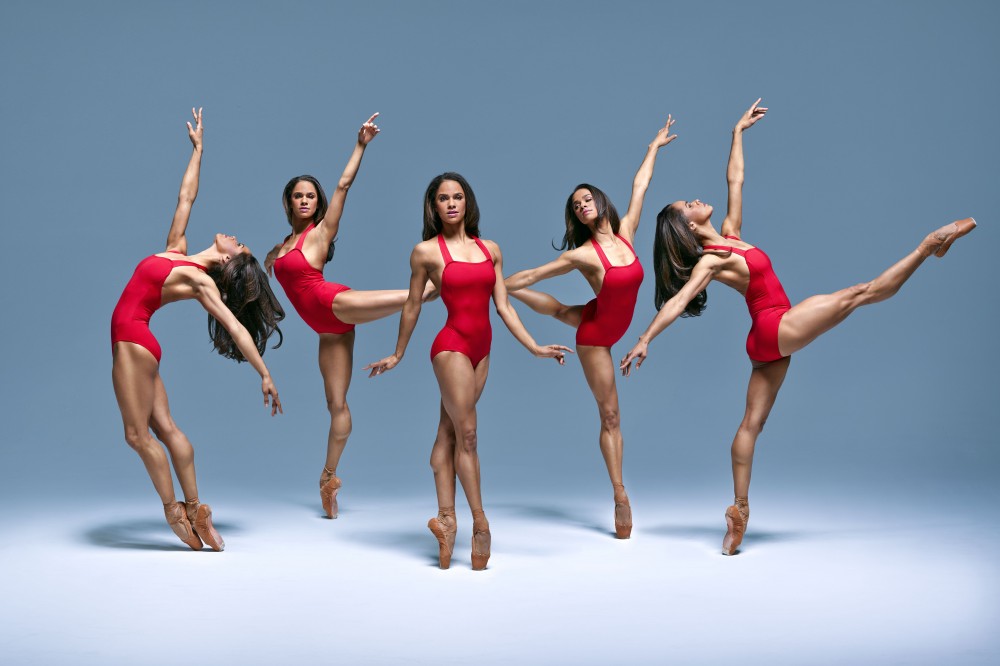In 2007, Misty Danielle Copeland became the first African-American ballerina to be a principal dancer with the American Ballet Theater (ABT) in twenty years. Since then, Misty Copeland has become a recognized icon for breaking down barriers in the art of dance. All her determination and resilience was built on the work of her mentor, Raven Wilkinson. Wilkinson was an African-American ballerina performing in the early days of the Civil Rights Movement. “She’s been through so much more than I could ever imagine, in the 1950s and experiencing racism in that time. It just felt like, ‘I can do this,'” Copeland expressed.1 Misty Copeland knew racism was not going to stop her from chasing her dreams.
As a young child, Misty Copeland expressed herself in the form of dance and instantly fell in love with the art. With her family’s hardship, dance was her escape and all her worries went away. Some of these worries included a lack of finances, a lack of comfortable living conditions, and a mother constantly changing boyfriends.2 Dance offered Copeland a way to relax and forget about all her problems. A prodigy by the age of thirteen, she surpassed the other dancers even with the many years they had ahead of her.
Once her training became more intense, Copeland began competing and receiving scholarships. At age fifteen, she was accepted with a full scholarship to the San Francisco Ballet’s Intensive Summer Program. In 2000, Copeland was also named the ABT’s Coca-Cola Scholar. After the program, the ABT invited Copeland to be part of their own studio company. She was the only African-American woman out of eighty dancers, an impressive feat since she was often challenged by her race and physique.3 “I had been told to pancake my skin a lighter color to fit in with the rest of the company,” she wrote.4 Nonetheless, she rose up with her extraordinary skill, and the lack of racial diversity came to the forefront, beginning to make waves in the ballet world.

Stephanie Webre challenged the status quo by casting two African Americans to play the leading roles in Swan Lake: Brooklyn Mack and Misty Copeland. Copeland and Mack were exquisite for their dancing. However, their performance was also admired for Webre’s ethnic inclusiveness, because dancers of color rarely get the chance for leading roles. According to Karen Sparks: “Many companies and schools endorse retrograde aesthetic values that place dancers of color at a disadvantage in the realms of hiring, castings, and promotions.”5 This discouraged African-American dancers from continuing on and studying ballet. For these reasons, there have been insufficient breaks for dancers of color.
After two decades, Misty Copeland became the first African-American soloist dancer to perform for ABT. Her story quickly made her a role model. “It made me feel really empowered not to let the negativity of racism even to this day affect me and my career. I can be strong and persevere and allow my talent to shine beyond the color of my skin,” she wrote.6 Misty Copeland became an advocate for “diversifying the field of ballet and creating access for dancers of varying racial and economic backgrounds.”5
Since receiving a leading role, Copeland has served on the advisory committee for the ABT’s Project Plié, which is a program “to increase racial and ethnic representation in ballet that offers guidance to dance instructors in diverse communities around the United States.”8 Project Plié’s objective is to discover the next “Misty Copeland” and invest in his or her training. The program is made up of a combination of corporations within the dance community to provide scholarships and many opportunities for dancers of color. Project Plié offers internships to encourage many dancers of various backgrounds to pursue their dreams of becoming professional ballerinas. In order to obtain a scholarship or internship, the student must attend many auditions and attract the attention of the advisory committee. Once selected, Project Plié interns are eligible to receive a scholarship to live during their time in New York City. The scholarship consists of roundtrip transportation, a metro card, and housing assistance. This organization could not be what it is today without Misty Copeland’s determination. She continues to advocate for dancers of color and dancers of unprivileged backgrounds to pursue their dreams of becoming a dancer. Today, several ballet companies have made progress in changing racial inequality in ballet. Just within the last decade, many companies have recruited dancers and have begun to change the complexion on the stage. Misty Danielle Copeland is breaking the racial barriers and paving the way for future ballerinas.9

- Encyclopedia Britannica, December 2014, s.v. “Misty Copeland,” by Naomi Blumberg. ↵
- Misty Copeland, Life in Motion: An Unlikely Ballerina (New York: Aladdin, 2014), 20. ↵
- Encyclopedia Britannica, December 2014, s.v. “Misty Copeland,” by Naomi Blumberg. ↵
- Misty Copeland, Life in Motion: An Unlikely Ballerina (New York: Aladdin 2014), 20. ↵
- Encyclopedia Britannica, June 2015, s.v. “Addressing Racial Diversity in Ballet,” by Karen Sparks. ↵
- Misty Copeland, Life in Motion: An Unlikely Ballerina (New York: Aladdin 2014), 127. ↵
- Encyclopedia Britannica, June 2015, s.v. “Addressing Racial Diversity in Ballet,” by Karen Sparks. ↵
- Encyclopedia Britannica, June 2015, s.v. “Addressing Racial Diversity in Ballet,” by Karen Sparks. ↵
- Rhonesha Byng, “Misty Copeland Inspires Project Plie, A Diversity Initiative Launched By ABT To Fine More Black Ballerinas,” Huffpost, September 2013, https://www.huffingtonpost.com/2013/09/19/misty-copeland-project-plie-_n_3950827.html. ↵



60 comments
Anthony Robledo
This was a great topic. You are a great writer and make me really want to keep reading. I think you could do a bit more on your introduction, but overall this article was amazing. I dont know much about the history of ballerinas, but to see the impact Misty Copeland made in the industry was cool. The images used in this article is what really took it to another level. Keep up the good work!
Carlos Vazquez
The story of Misty Copeland is truly inspiring. By becoming the first African American to be the principal dancer at the American Ballet theater she was able to break the social stigma and prove that women of color were just as talented. This article was really well written and informative and I really enjoyed reading it and learning more about her incredible story.
Max Lerma
This was a really interesting article. I had never heard of Misty Copeland before reading your article, but because of how well you keep your audience engaged with your writing style I kept on reading and I am glad I did. I never knew race was such a large factor in the world ballet and I am glad that Misty Copeland was able to break those barriers.
Samuel Stallcup
My sister was a dancer, and still is, and it was great to see the accomplishments she was able to make during her tenure. Knowing the skill and dedication it takes to become a great dancer, Misty’s career becomes even more impressive. This article did a good job at highlighting the tough obstacles she was able to overcome. Nice article.
Belia Camarena
I love the title of this article! It automatically drew me to click on it, and the article itself is equally good. The story of Misty Copeland is amazing. She truly is a role model because she had the strength to go where no other African American ballerina had gone. I had never realized that ethnic diversity was such a large issue in professional ballet, so I am glad I read this article.
Destiny Leonard
This was such an interesting article, I always like learning about people who break down barriers within society. It was interesting to read how she had to overcome different obstacles in her life and how she progressed in her career as a dancer. This was such a great article!
Regina De La Parra
Reading about ballerinas is something I really enjoy because I used to dance ballet before and I miss is a lot. It is really nostalgic in a good way. Anyways, Misty is a very inspiring person who has proved herself and continues to prove herself every time she dances and performs. I really like how this article shows that of her. Overall, this is an amazing article about an amazing woman. Great job Alexandra!
Tyler Thompson
Misty Copeland is truly astonishing. She was able to break social barriers, and she used her talent to promote African Americans to learn the art of ballet. I liked the part of the article where she mentioned Misty’s performance of Swan Lake, and despite the negativity it received from it, she was still able to prosper and create Project Plié. It was a very well written article.
Miranda Alamilla
In first reading this article, I payed a lot more attention to the article itself than I did to the pictures. But now, looking back, the pictures are so wonderfully chosen and seem like they took a great deal of work to take. To have to hold a dance pose for a photo and take multiple photos of the same dance move to get the right photo is definitely not an easy task! Best of luck!
Hector Garcia
The topic of this article was quite unique and it one of several things that I would have never thought could change history. Her role as the first African American ballerina seems pretty detrimental to the world of ballet and her leading roles in multiple shows just shows her true potential as a ballerina. This article seemed really inspirational and would understand why it was nominated for Best Use of Images.